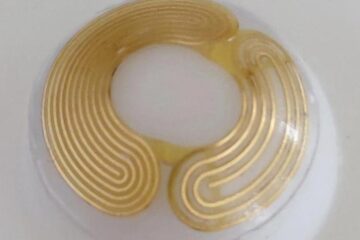Nectar is not a simple soft drink

Scientists Danny Kessler and Ian Baldwin from the Max Planck Institute for Chemical Ecology in Jena, Germany, recently addressed the question, why would plants risk poisoning the insects and birds that provide pollination services? Their findings have been published in The Plant Journal.
Kessler and Baldwin examined the nectar of a wild tobacco species, Nicotiana attenuata, and discovered that it is flavoured with 35 secondary compounds. The researchers then tested 16 of these in cafeteria-style bioassays with three groups of native visitors – hawkmoths, hummingbirds (both pollinators) and ants (‘nectar thieves’). Some compounds were attractive and others were not. Certain nectar blends seem to increase a flower’s chances of being visited by useful pollinators while discouraging nectar thieves.
Nicotine, the most abundant repellent found, affected both pollinators and nectar thieves in the same way. The visitors removed less nectar per visit when nicotine was present. To determine if nicotine was repellent in the real world, the researchers genetically transformed N. attenuata plants to create nicotine-free plants, which were planted into a natural population and nectar removal rates were measured. Native floral visitors removed much more nectar from the plants that had no nicotine than from the normal nicotine-containing plants. Why would a plant produce nectar that repels pollinators? Data from the bioassays provided a hypothesis: when nectar contains nicotine, the amount of nectar consumed per visit decreases but the number of visitations increases. Increasing the number of visitors might increase the genetic diversity of the offspring produced. The researchers are planning to test this hypothesis in the upcoming field season.
Dissecting the function of this secret formula of nectar, thought to be nature’s soft drink, has instead shown it to be quite ‘hard’.
Media Contact
All latest news from the category: Life Sciences and Chemistry
Articles and reports from the Life Sciences and chemistry area deal with applied and basic research into modern biology, chemistry and human medicine.
Valuable information can be found on a range of life sciences fields including bacteriology, biochemistry, bionics, bioinformatics, biophysics, biotechnology, genetics, geobotany, human biology, marine biology, microbiology, molecular biology, cellular biology, zoology, bioinorganic chemistry, microchemistry and environmental chemistry.
Newest articles

‘Smart’ contact lenses could someday enable wireless glaucoma detection
Most people with early-stage glaucoma don’t know they have it, even though early treatment is key to reducing vision loss. While detecting a subtle increase in eye pressure helps doctors…

New tech may lead to smaller, more powerful wireless devices
Good vibrations… What if your earbuds could do everything your smartphone can do already, except better? What sounds a bit like science fiction may actually not be so far off….

Caution, hot surface!
An international research team from the University of Jena and the Helmholtz Institute Jena are demystifying the mechanisms by which high-intensity laser pulses produce plasma on the surface of solids….





















